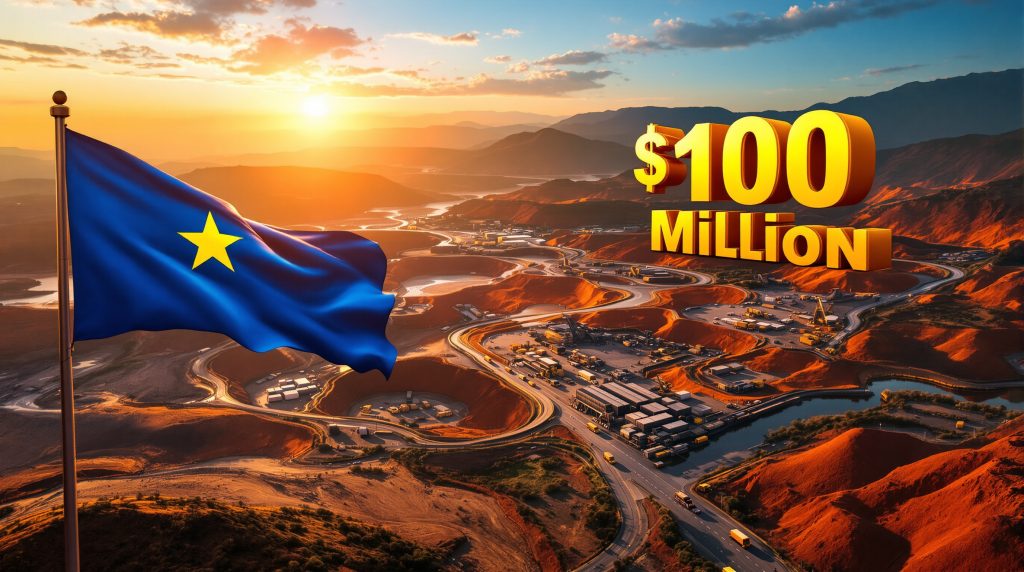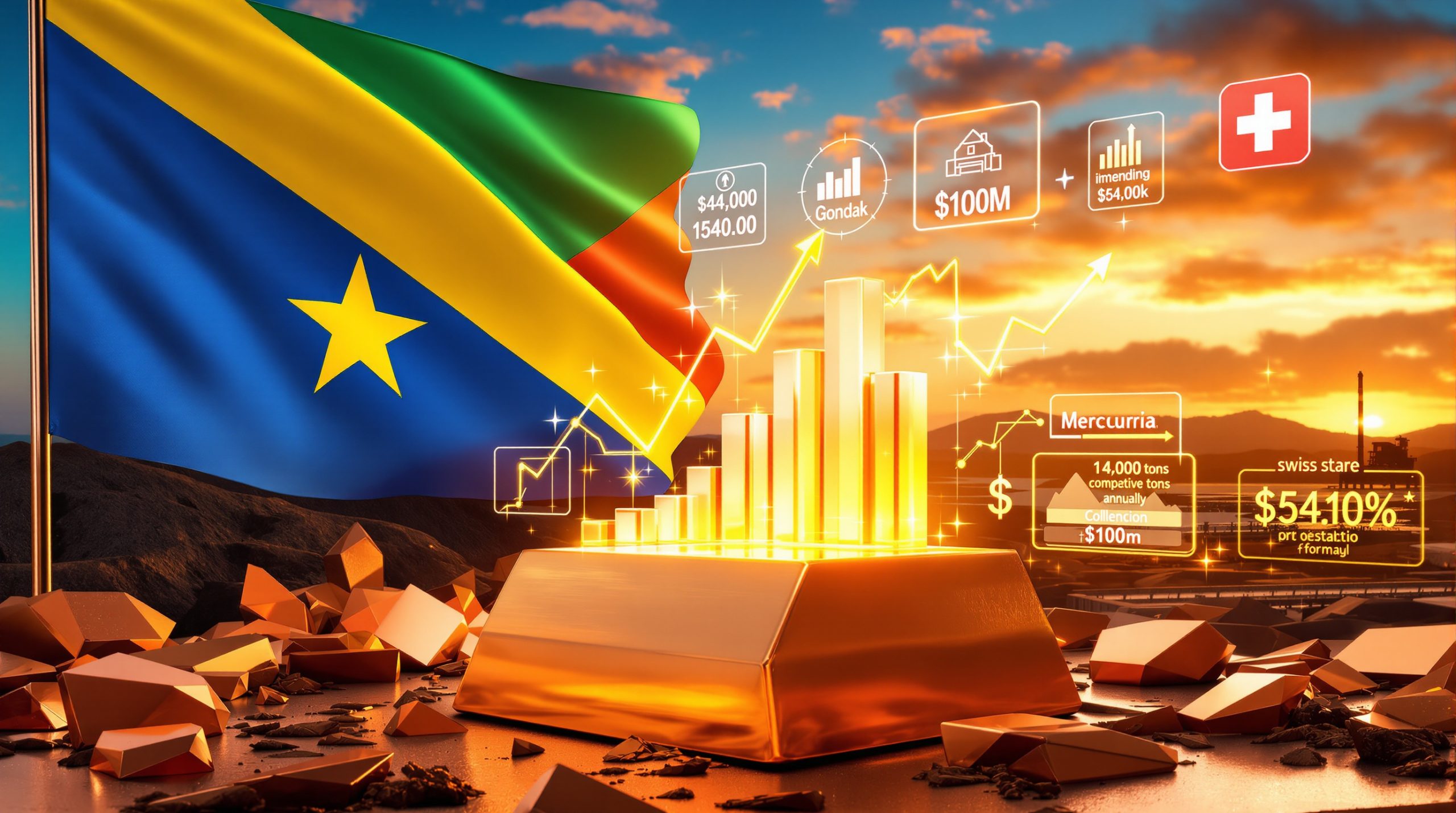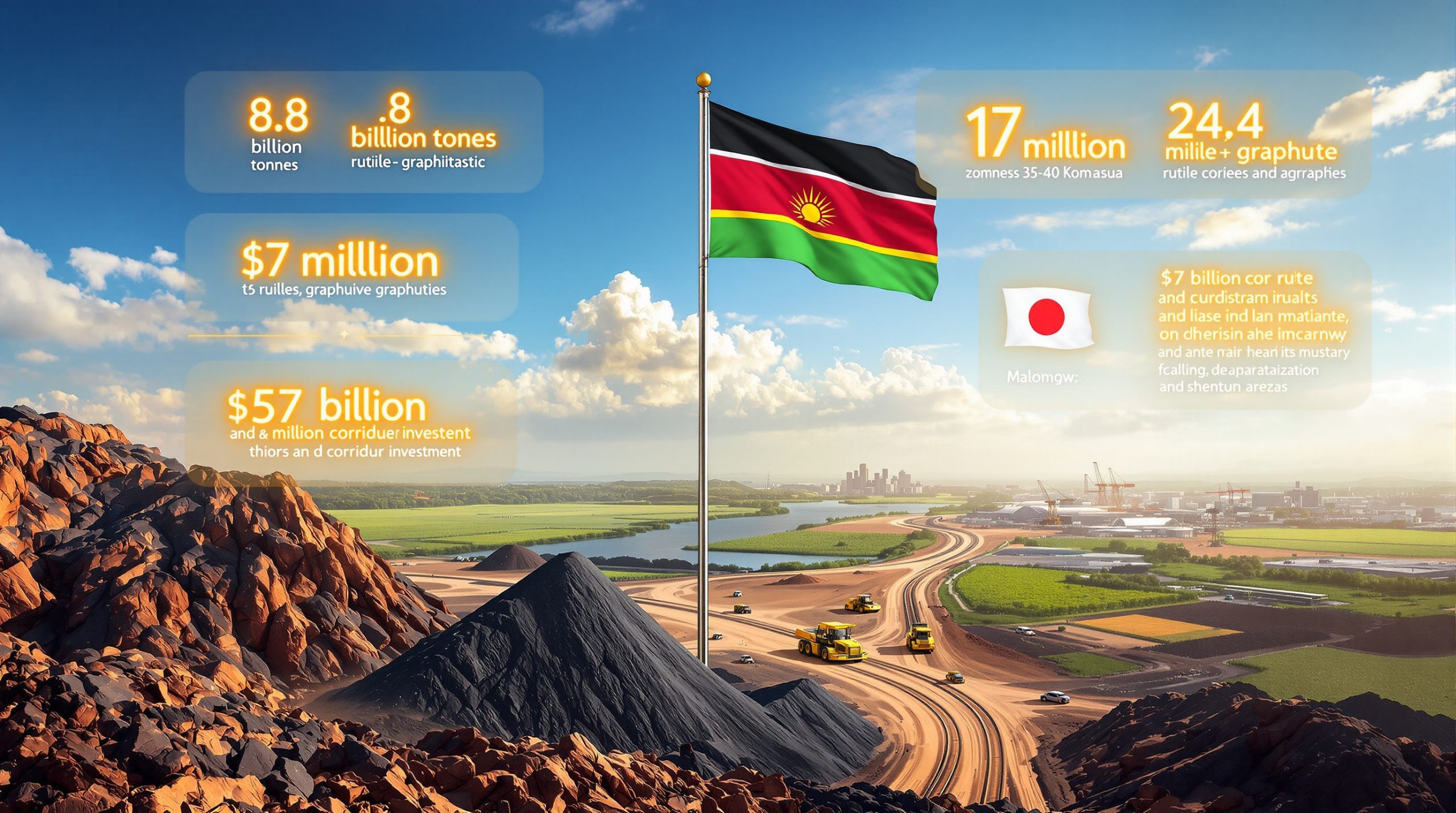Strategic Foundations of the Eurasian Resources and Mercuria Copper Deal
The recent partnership between Eurasian Resources Group (ERG) and Mercuria Energy Trading represents a significant shift in African mining finance structures. This $100 million prepayment agreement establishes new precedents for commodity trader involvement in Democratic Republic of Congo's copper sector, reflecting broader trends toward vertical integration and supply chain security throughout the mining industry evolution.
Prepayment Financing Architecture and Implementation
The three-year supply agreement between ERG and Mercuria incorporates sophisticated financial mechanisms designed to optimise capital allocation while managing market volatility. Under this structure, Mercuria provides upfront capital in exchange for guaranteed copper deliveries, creating immediate liquidity for ERG's operational expansion requirements.
Key structural components include:
- Staged capital deployment over 36 months
- Volume commitments tied to production capacity milestones
- Quality specifications aligned with London Metal Exchange standards
- Force majeure provisions addressing geopolitical risk factors
This financing model reduces ERG's dependence on traditional banking facilities whilst providing Mercuria with secured copper supply at predetermined pricing mechanisms. Furthermore, the agreement includes flexible volume adjustments to accommodate production variability, addressing common challenges in mining operations where geological conditions can impact output consistency.
Geographic Advantages in DRC's Katanga Province
The Democratic Republic of Congo maintains its position as the world's second-largest copper producer, with annual output exceeding 1.8 million tonnes according to International Copper Study Group data. ERG's operations in Katanga Province benefit from established infrastructure networks connecting mining sites to regional transportation hubs.
Strategic geographic factors include:
- Proximity to established rail networks linking to Atlantic ports
- Access to regional power grid connections
- Existing relationships with local government authorities
- Established workforce with specialised mining expertise
The Kolwezi region, where ERG operates its primary facilities, contains some of Africa's highest-grade copper deposits, with ore grades significantly above global averages. This geological advantage translates to lower processing costs and higher profit margins compared to operations in regions with lower-grade mineralisation.
Mercuria's Strategic Expansion Beyond Energy Commodities
Metals Trading Division Performance Metrics
Mercuria's metals division has demonstrated exceptional growth trajectories, with trading profits increasing by approximately $300 million during 2025 according to Bloomberg reporting. This performance reflects successful diversification from traditional energy commodities into critical minerals essential for global energy transition initiatives.
The Switzerland-based trader has systematically expanded its metals portfolio through strategic partnerships across multiple African jurisdictions. In addition, experts in the field emphasise the strategic importance of central African copper resources in supporting long-term supply security objectives, particularly given current copper price prediction insights.
Mercuria's expansion strategy encompasses:
- Direct partnerships with state-owned mining entities
- Prepayment financing for production capacity development
- Integrated logistics and transportation solutions
- Risk management through geographic diversification
Competitive Positioning Among Global Trading Houses
The commodity trading landscape features intense competition among major players including Glencore, Trafigura, and Vitol. Each organisation pursues distinct strategies for securing African mineral resources, creating dynamic market conditions that benefit mining companies through competitive financing terms.
Comparative analysis of major trading house strategies:
| Trading House | African Focus | Investment Model | Contract Duration |
|---|---|---|---|
| Mercuria | DRC/Zambia | Prepayment Finance | 3-5 years |
| Glencore | Multi-country | Equity Stakes | Long-term |
| Trafigura | West/Central Africa | Hybrid Financing | Variable |
| Vitol | North/West Africa | Traditional Trading | Short-term |
This competitive environment drives innovation in financing structures and encourages more favourable terms for mining companies. The Eurasian Resources and Mercuria copper deal exemplifies how trading houses are adapting traditional commodity finance models to meet evolving market demands.
Capital Structure Optimisation Through Forward Contracting
Immediate Liquidity Benefits for Mining Operations
Prepayment financing provides mining companies with immediate access to working capital without the traditional collateral requirements associated with conventional banking facilities. This capital structure advantage enables accelerated development timelines and enhanced operational flexibility during market volatility periods.
ERG's access to $100 million in upfront financing eliminates typical project financing delays and reduces exposure to fluctuating interest rates. The agreement structure allows for capital deployment optimisation based on operational priorities rather than external financing availability.
Primary capital structure benefits include:
- Enhanced cash flow predictability
- Reduced financial intermediation costs
- Accelerated project development timelines
- Improved balance sheet flexibility
Risk Mitigation Through Supply Chain Integration
Forward contracting mechanisms embedded within the ERG-Mercuria agreement provide sophisticated risk management tools addressing price volatility, operational disruptions, and geopolitical uncertainties. These contracts establish predetermined pricing formulas that protect both parties from adverse market movements, particularly important when considering traders' desperation for copper deals.
Currency hedging provisions protect against foreign exchange fluctuations affecting USD-denominated transactions. Furthermore, the agreement includes automatic adjustment mechanisms for force majeure events, ensuring operational continuity during unforeseen circumstances.
Risk management components encompass:
- Price hedging through London Metal Exchange benchmarks
- Volume flexibility addressing production variability
- Currency protection against exchange rate fluctuations
- Geopolitical risk allocation between contracting parties
Geopolitical Dynamics in African Copper Markets
Western Strategic Interests Versus Chinese Influence
The Eurasian Resources and Mercuria copper deal reflects broader geopolitical competition for African mineral resources. Western commodity traders are actively seeking to establish alternative supply chains that reduce dependence on Chinese-controlled mining operations and infrastructure networks.
China's Belt and Road Initiative has historically dominated African mining finance, creating concerns among Western governments about supply chain vulnerability. However, the ERG-Mercuria partnership represents a strategic counterbalance supported by European governmental interests in securing critical mineral access.
Geopolitical considerations include:
- Supply chain diversification away from Chinese influence
- European Union critical minerals security objectives
- NATO alliance resource security coordination
- Regional diplomatic relationship strengthening
State Ownership Implications for International Partnerships
ERG's 40% government ownership by Kazakhstan introduces sovereign backing that enhances partnership credibility whilst creating diplomatic considerations for international agreements. This ownership structure provides implicit government support for major transactions while ensuring alignment with state strategic objectives.
The Kazakhstan government's involvement facilitates diplomatic coordination with DRC authorities, potentially expediting regulatory approvals and operational permits. Consequently, state backing also provides additional financial security for international partners concerned about political risk exposure.
State ownership advantages encompass:
- Enhanced diplomatic relationship facilitation
- Reduced political risk exposure for international partners
- Access to sovereign financing mechanisms
- Improved regulatory approval coordination
Market Impact Assessment and Price Discovery Mechanisms
DRC Production Capacity and Global Supply Integration
The Democratic Republic of Congo's copper production capacity continues expanding through infrastructure investments and technological improvements. Current production levels of approximately 1.8 million tonnes annually position DRC as a critical component of the global copper supply forecast supporting energy transition initiatives.
ERG's operations contribute significantly to national production totals, with processing facilities capable of handling both oxide and sulfide ore types. The company's integrated approach combines mining operations with on-site processing capabilities, maximising value extraction from extracted materials.
Production capacity factors include:
- Annual output potential exceeding 200,000 tonnes
- Processing capability for multiple ore types
- Transportation infrastructure connecting to export facilities
- Workforce expertise supporting operational efficiency
Long-term Contract Impact on Spot Market Dynamics
Extended supply agreements like the ERG-Mercuria deal influence spot market pricing mechanisms by removing significant quantities from open market transactions. This supply reduction during periods of high demand can create upward pressure on prevailing copper prices.
London Metal Exchange pricing reflects the cumulative impact of long-term contracts, with market participants adjusting expectations based on contracted supply volumes. The three-year duration of the ERG-Mercuria agreement provides market stability whilst potentially constraining spot market availability.
Market dynamic considerations encompass:
- Reduced spot market liquidity during high demand periods
- Price premium development for immediate delivery requirements
- Enhanced price stability for contracted participants
- Market concentration effects from major supply agreements
Energy Transition Demand Drivers
Copper Requirements in Renewable Infrastructure Development
Global energy transition initiatives require unprecedented copper quantities for renewable energy infrastructure, electric vehicle manufacturing, and grid modernisation projects. Electric vehicles contain approximately 80 kilograms of copper compared to 25 kilograms in conventional vehicles, highlighting the dramatic demand increase associated with transportation electrification.
Renewable energy installations demand significant copper quantities, with wind turbines requiring 3-5 tonnes per megawatt of installed capacity. Solar installations, power transmission infrastructure, and energy storage systems create additional demand pressures supporting long-term price stability expectations as part of the broader energy transition strategy.
Energy transition copper applications include:
- Electric vehicle motor and battery systems
- Solar panel wiring and electrical connections
- Wind turbine generators and transmission systems
- Grid infrastructure and energy storage facilities
Supply Chain Resilience for Technology Manufacturing
Technology sector manufacturers prioritise supply chain security over cost optimisation when securing critical materials like copper. The semiconductor industry, telecommunications infrastructure development, and consumer electronics manufacturing require consistent copper availability to maintain production schedules.
Just-in-time inventory management strategies are evolving toward strategic stockpiling approaches as companies recognise supply chain vulnerability risks. Major technology manufacturers are establishing direct relationships with mining companies and commodity traders to ensure material availability during market disruptions.
Technology sector copper requirements encompass:
- Semiconductor manufacturing processes
- Telecommunications infrastructure development
- Consumer electronics production
- Industrial automation systems
Financial Performance Metrics and Success Measurement
Return on Investment Analysis for Prepayment Structures
Commodity trading partnerships generate returns through multiple mechanisms including price arbitrage opportunities, logistics optimisation, and market timing strategies. Mercuria's investment in ERG operations targets returns exceeding traditional commodity trading margins through integrated supply chain control.
Performance measurement frameworks evaluate delivery consistency, quality specifications adherence, and market timing optimisation. Successful partnerships demonstrate sustainable profit generation whilst maintaining operational flexibility to capitalise on market opportunities.
Financial performance indicators include:
- Return on invested capital exceeding 15% annually
- Volume delivery consistency above 95% of contracted amounts
- Quality specifications meeting LME standards
- Market timing optimisation generating additional margins
Comparative Analysis of African Copper Trading Agreements
Recent commodity trading agreements across Africa demonstrate increasing sophistication in financing structures and risk allocation mechanisms. Contract values have increased substantially as trading houses compete for strategic partnerships with established mining operations.
Major African copper trading deals (2023-2025):
| Partnership | Contract Value | Duration | Geographic Focus | Strategic Elements |
|---|---|---|---|---|
| Mercuria-ERG | $100 million | 3 years | DRC | Prepayment financing |
| Glencore-Various | $150+ million | Multiple | DRC/Zambia | Equity participation |
| Trafigura-State Entities | $200+ million | 5 years | Zambia | Government backing |
| Vitol-Regional Miners | $75 million | 2 years | Ghana/Mali | Flexible terms |
These agreements reflect evolving market dynamics where trading houses provide increasingly sophisticated financial solutions in exchange for secured supply arrangements. Contract terms continue evolving to address changing market conditions and regulatory requirements.
Regulatory Framework and Compliance Considerations
Cross-Border Transaction Requirements and Oversight
International commodity trading agreements require compliance with multiple regulatory jurisdictions including export licensing, anti-money laundering provisions, and sanctions screening procedures. The ERG-Mercuria deal involves coordination between Luxembourg, Switzerland, DRC, and Kazakhstan regulatory authorities.
Export licensing procedures in DRC require government approval for significant commodity transactions, with strategic minerals subject to additional scrutiny. Compliance frameworks address environmental standards, social responsibility requirements, and revenue transparency obligations.
Regulatory compliance elements encompass:
- Export licence acquisition and maintenance
- Anti-money laundering procedure implementation
- Sanctions screening and geopolitical risk assessment
- Environmental and social governance standard adherence
Evolution of Mining Finance Regulatory Standards
International regulatory standards for mining finance continue evolving to address environmental sustainability, community impact mitigation, and governance transparency requirements. Modern commodity trading agreements incorporate ESG compliance provisions that influence operational practices and financial performance.
Technology adoption funding through commodity agreements requires demonstration of sustainable mining practices and community development contributions. These requirements create additional costs whilst potentially enhancing long-term operational sustainability and community relations.
Emerging regulatory trends include:
- Enhanced environmental impact assessment requirements
- Community development funding obligations
- Technology adoption supporting sustainability objectives
- Governance transparency and reporting standards
Strategic Implications for Mining Industry Development
Partnership Model Applications for Other Mining Companies
The Eurasian Resources and Mercuria copper deal establishes precedents that other mining companies can adapt for their specific operational requirements and market conditions. Successful partnership elements include flexible volume commitments, sophisticated risk allocation mechanisms, and integrated supply chain coordination.
Mining companies evaluating similar partnerships should consider operational readiness factors including production consistency capabilities, quality control systems, and logistics infrastructure adequacy. Successful partnerships require demonstrated operational excellence and transparent communication with trading partners.
Key success factors for mining partnerships include:
- Consistent production capability demonstration
- Quality control systems meeting international standards
- Transportation and logistics infrastructure adequacy
- Financial transparency and reporting capability
Long-term Industry Transformation Trends
Commodity trading partnerships are driving fundamental changes in mining industry capital structures and operational practices. Traditional project financing models are evolving toward integrated supply chain partnerships that provide enhanced flexibility and risk management capabilities.
Future mining operations will likely feature closer integration with commodity traders and end-users, creating more resilient supply chains whilst potentially improving profitability through value chain optimisation. These partnerships support sustainable development objectives whilst meeting growing global demand for critical minerals.
Industry transformation trends encompass:
- Increased vertical integration between traders and miners
- Enhanced focus on supply chain sustainability and traceability
- Technology adoption supporting operational efficiency
- Strengthened partnerships between mining companies and end-users
The ERG-Mercuria agreement represents a sophisticated evolution in mining finance that addresses contemporary challenges whilst positioning both organisations for long-term success in dynamic global commodity markets. This partnership model offers valuable insights for industry participants seeking to optimise capital structures and secure strategic market positions in Africa's critical minerals sector.
Looking for Your Next Copper Investment Opportunity?
Discovery Alert's proprietary Discovery IQ model delivers real-time notifications on significant ASX mineral discoveries, instantly empowering subscribers to identify actionable opportunities ahead of the broader market. Understand why major mineral discoveries can lead to substantial market returns by exploring Discovery Alert's dedicated discoveries page, showcasing historic examples of exceptional outcomes.




